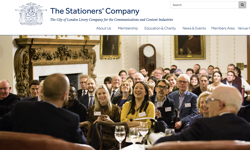Relaunching a magazine is often viewed by the publishing sector as an expensive waste of time ... and it can be just that. Handled correctly, however, it can breathe new life and new profitability into an underperforming publication.
My company, Portfolio Publishing, decided that a relaunch was the best option for a magazine called Financial Planner, the official journal of the Institute of Financial Planning, one of our clients.
Relaunching is not something to be undertaken lightly. Get it wrong and you can blow a small fortune on redesigns, new circulation efforts and marketing campaigns, not to mention extensive new content. All without any chance of getting your money back. Many relaunches fail because publishers fail to research their chosen markets properly. We were determined not to fall into this trap and an intensive research-based approach was a high priority from the start.
Relaunches are regular features of the consumer and trade sectors and not to be confused with a superficial redesign. Refreshing a design is not a relaunch, simply a seasonal change of clothes.
A relaunch requires a willingness to undertake a significant change of direction or style and it can really shake up markets. When the Independent opted to relaunch as a tabloid, it added tens of thousands of new readers and forced rivals such as the Times and the Guardian to relaunch. In the trade sector, New Model Adviser, a magazine for financial advisers, switched recently from monthly magazine format to become a weekly tabloid newspaper and saw vastly increased revenue.
So, how did we relaunch Financial Planner and what did we learn?
Reason for the relaunch
For us, the process started two years ago when, as a financial media company, we spotted that the existing magazine produced by the institute had great potential but was hindered by a number of factors. These included low circulation of under 2,000, poor design and layout, too much editorial produced by non-professionals and a lack of direction. It was a hugely under-performing magazine, more of an in-house newsletter rather than a professional magazine which proudly represented the new and growing profession of fee-based financial planners.
At the request of our client, the Institute of Financial Planning, we began by undertaking detailed reader research to find out what the readers really thought about the magazine. Anecdotal evidence suggested they were polite about it, but what did they actually think?
We used professionals to interview nearly 50 readers at length, spending 45 minutes to an hour on each interview.
The result was a report which ran to over 350 pages including verbatim transcripts of the interviews. We felt it important to ask the readers to explain their views rather than just list them, a 3D approach rather than a 2D one.
The research, together with discussions with advertisers and leading players in the financial services market, provided insight into the type of magazine readers wanted and advertisers would support.
We discovered the existing features in the magazine which were liked (letters, institute news and so on) and the ones which irritated ("the same old faces each issue," sponsored editorial and so on). With a relaunch, while major design and editorial changes are almost inevitable, it’s important not to throw the baby out with the bath water. Keeping popular features helps readers migrate from one format to another. It’s important not to alienate existing readers while you seek new ones.
Outsourcing
The readership was mostly middle-aged and professional. We knew from the research that they wanted something serious, sober, easy to navigate and, above all, informative. Something worth reading. Previously, the magazine had been produced in-house by the institute as a quarterly 32-page title with a circulation of approximately 2,000. We spent several months on redesigning and we decided it would be wise to outsource much of the publishing work to professionals. Liquorice Creative, who design this magazine, were chosen to do the redesign, Stones the Printers were selected as the main printer and Jordan & Co International were asked to handle the distribution using Presstream 2. Optima WDIS were selected as subscriber managers. Wimbledon-based Cabbell were asked to represent advertising sales.
We knew, however, that outsourcing alone work would not be enough and there needed to be more radical change.
Editorial changes
Using the research, we added many editorial features requested by readers including a Case Study, an in-depth Technical Update section, better covers, a cover feature, an interview, several news pages, pages for IFP members only, columns by national journalists and many more. Also added was a careers section and recruitment advertising for the first time and we have just produced our first, highly successful survey, a 12-page special covering equity release.
We knew, however, that while content was king, we needed even more change to excite advertisers and increase the profile of the institute and its magazine, two key aims.
Circulation increases
To do this, we took the radical decision to increase frequency from quarterly to ten times per year (monthly with the exception of two joint mid-summer and mid-winter issues). We also decided, after discussions with advertisers, that circulation had to be increased significantly. On top of the existing 2,000 institute members, we purchased a list of 3,000 extra financial planners and wealth managers, boosting total circulation to over 5,000 a month. After three issues, circulation has now risen to over 5,300 and, when promotional copies are added on top, we are regularly distributing 5,700 to 6,000 copies per issue. In annual terms, circulation has increased from 8,000 a year to nearly 60,000, a massive increase.
So is it working? It is too early to be certain about the long-term benefits but the early signs are very positive.
Feedback on the relaunch has been excellent with readers impressed by the clear, colour-coordinated sections which provide much easier navigation. They also like the new look which has plenty of "wow-factor" – big, striking pictures, punchy informative features, better charts and provocative columns and letters pages which get people talking about the magazine. Average pagination is now 52 pages per issue, an increase of over 60%.
Membership drive
The institute is also pleased. New members were signing up at the rate of ten a month at the start of the year. In July, 107 new members joined and 100 a month now looks achievable. A new member offer timed for the relaunch issue helped. This offered a discount worth £50 off new membership fees and was heavily promoted in the magazine, suggesting that special offers and relaunches can work well.
Not everything was plain sailing, of course. The first issue was rushed meaning that advertising opportunities were not realised as well as they could have been. Advertisers also wanted to see the new look before committing, but many new advertisers have now come on board and ad revenue has risen for each of the two subsequent issues after the launch. Advertiser confidence is also rising with one deal recently confirmed for 12 issues.
Lessons learned
Workflow issues also occurred at first, common in corporate publishing where several people have to sign off each page. New workflow processes have now been put in place which work much better. When relaunching, it’s important to communicate all the changes to all the stakeholders and this can often be overlooked. Treating the relaunch as a partnership with the institute has worked extremely well and it was helpful that the institute saw the benefits of relaunching early on.
Our relaunch experiences have taught us that you cannot do too much planning or research and it is crucial, particularly in the corporate publishing sector, to find the right partner before embarking on a relaunch. We have since rejected some approaches simply because the chemistry was wrong and because the benefits of relaunching would not be significant enough.
Three months down the line, we have a magazine which is turning heads, growing ad revenue, a much higher circulation and a happy client.
A research-based approach worked for us, but each case for a relaunch will be different. To justify the new investment in a relaunch, it is worth treating the project as effectively a launch and applying the same criteria, the costs will not be much different. The major difference is that in most cases, many of the existing readers will form the basis for the new readership.
A critical consideration for any business must also be the return to be achieved from a relaunch. If the relaunch can increase the revenue substantially, certainly by more than 25%, it is worth considering and the bigger the increase in revenue the greater the justification for doing it.
It’s also important to look at competitor titles. With a relaunch, as the Independent knows, there is great first-mover advantage. Others will copy your successful changes but you will be first and it will take others time to respond. As to when to relaunch, there is no scientific test. A publisher’s gut instinct is as good as any, but a good test as to whether the time is right is when subscribers begin to desert the title in growing numbers or reader research shows that the content is no longer relevant to readers’ interests. Falling ad revenue and signs that competitors are doing significantly better than you are also indicators.
Relaunching purely because a new editor or publisher has arrived and wants to show what they can do or because another competitor title has relaunched are all bad times to go for knee-jerk radical change when a modest redesign is all that’s needed.
While there may be many benefits in relaunching, the primary concerns must be financial. Any new investment can only be justified if the returns pay for it. Publishers who keep firmly focused on the bottom line should find a relaunch at the right time a wise investment.
FEATURE
Makeover time
There are lots of things you need to consider before embarking on a relaunch. For a start, is it really necessary? Are the changes you have in mind cosmetic or the full monty? And, critically, what will be the financial return? Kevin O’Donnell takes us through his recent root and branch relaunch of Financial Planner magazine.










